This site uses cookies as defined in our Cookie Policy, by continuing to use this site you agree to their use.
Continue
| Arrive | Depart | ||||||
| 31st31 | AugAug | 202424 | Siracuse, Sicily, Italy, embark on the MSC Divina | 21:00 | |||
| Siracusa, known to English speakers as Syracuse, is a wonder to behold. One of the great ancient capitals of Western civilization, the city was founded in 734 BC by Greek colonists from Corinth and soon grew to rival, and even surpass, Athens in splendor and power. It became the largest, wealthiest city-state in the West and a bulwark of Greek civilization. Although Siracusa lived under tyranny, rulers such as Dionysius filled their courts with Greeks of the highest cultural stature—among them the playwrights Aeschylus and Euripides, and the philosopher Plato. The Athenians, who didn't welcome Siracusa's rise, set out to conquer Sicily, but the natives outsmarted them in what was one of the greatest military campaigns in ancient history (413 BC). The city continued to prosper until it was conquered two centuries later by the Romans.Present-day Siracusa still has some of the finest examples of Baroque art and architecture; dramatic Greek and Roman ruins; and a Duomo that's the stuff of legend—a microcosm of the city's entire history in one building. The modern city also has a wonderful, lively, Baroque old town worthy of extensive exploration, as well as pleasant piazzas, outdoor cafés and bars, and a wide assortment of excellent seafood. There are essentially two areas to explore in Siracusa: the Parco Archeologico (Archaeological Zone), on the mainland; and the island of Ortygia, the ancient city first inhabited by the Greeks, which juts out into the Ionian Sea and is connected to the mainland by two small bridges. Ortygia is becoming increasingly popular with tourists, and is starting to lose its old-fashioned charm in favor of modern boutiques.Siracusa's old nucleus of Ortygia, a compact area, is a pleasure to amble around without getting unduly tired. In contrast, mainland Siracusa is a grid of wider avenues. At the northern end of Corso Gelone, above Viale Paolo Orsi, the orderly grid gives way to the ancient quarter of Neapolis, where the sprawling Parco Archeologico is accessible from Viale Teracati (an extension of Corso Gelone). East of Viale Teracati, about a 10-minute walk from the Parco Archeologico, the district of Tyche holds the archaeological museum and the church and catacombs of San Giovanni, both off Viale Teocrito (drive or take a taxi or city bus from Ortygia). Coming from the train station, it's a 15-minute trudge to Ortygia along Via Francesco Crispi and Corso Umberto. If you're not up for that, take one of the free electric buses leaving every 10 minutes from the bus station around the corner. | |||||||
| 1st01 | SepSep | 202424 | Valletta, Malta | 07:00 | 18:00 | ||
| Malta's capital, the minicity of Valletta, has ornate palaces and museums protected by massive fortifications of honey-color limestone. Houses along the narrow streets have overhanging wooden balconies for people-watching from indoors. Generations ago they gave housebound women a window on the world of the street. The main entrance to town is through the City Gate (where all bus routes end), which leads onto Triq Repubblika (Republic Street), the spine of the grid-pattern city and the main shopping street. Triq Mercante (Merchant Street) parallels Repubblika to the east and is also good for strolling. From these two streets, cross streets descend toward the water; some are stepped. Valletta's compactness makes it ideal to explore on foot. City Gate and the upper part of Valletta are experiencing vast redevelopment that includes a new Parliament Building and open-air performance venue. The complex, completed mid-2013, has numerous pedestrian detours in place along with building noise and dust. Before setting out along Republic Street, stop at the tourist information office on Merchant Street for maps and brochures. | |||||||
| 2nd02 | SepSep | 202424 | At Sea | ||||
| 3rd03 | SepSep | 202424 | Santorini, Greece | 07:00 | 16:00 | ||
| Undoubtedly the most extraordinary island in the Aegean, crescent-shape Santorini remains a mandatory stop on the Cycladic tourist route—even if it's necessary to enjoy the sensational sunsets from Ia, the fascinating excavations, and the dazzling white towns with a million other travelers. Called Kállisti (the "Loveliest") when first settled, the island has now reverted to its subsequent name of Thira, after the 9th-century-BC Dorian colonizer Thiras. The place is better known, however, these days as Santorini, a name derived from its patroness, St. Irene of Thessaloniki, the Byzantine empress who restored icons to Orthodoxy and died in 802. You can fly conveniently to Santorini, but to enjoy a true Santorini rite of passage, opt instead for the boat trip here, which provides a spectacular introduction. After the boat sails between Sikinos and Ios, your deck-side perch approaches two close islands with a passage between them. The bigger one on the left is Santorini, and the smaller on the right is Thirassia. Passing between them, you see the village of Ia adorning Santorini's northernmost cliff like a white geometric beehive. You are in the caldera (volcanic crater), one of the world's truly breathtaking sights: a demilune of cliffs rising 1,100 feet, with the white clusters of the towns of Fira and Ia perched along the top. The bay, once the high center of the island, is 1,300 feet in some places, so deep that when boats dock in Santorini's shabby little port of Athinios, they do not drop anchor. The encircling cliffs are the ancient rim of a still-active volcano, and you are sailing east across its flooded caldera. On your right are the Burnt isles, the White isle, and other volcanic remnants, all lined up as if some outsize display in a geology museum. Hephaestus's subterranean fires smolder still—the volcano erupted in 198 BC, about 735, and there was an earthquake in 1956. Indeed, Santorini and its four neighboring islets are the fragmentary remains of a larger landmass that exploded about 1600 BC: the volcano's core blew sky high, and the sea rushed into the abyss to create the great bay, which measures 10 km by 7 km (6 mi by 4½ mi) and is 1,292 feet deep. The other pieces of the rim, which broke off in later eruptions, are Thirassia, where a few hundred people live, and deserted little Aspronissi ("White isle"). In the center of the bay, black and uninhabited, two cones, the Burnt Isles of Palea Kameni and Nea Kameni, appeared between 1573 and 1925. There has been too much speculation about the identification of Santorini with the mythical Atlantis, mentioned in Egyptian papyri and by Plato (who says it's in the Atlantic), but myths are hard to pin down. This is not true of old arguments about whether tidal waves from Santorini's cataclysmic explosion destroyed Minoan civilization on Crete, 113 km (70 mi) away. The latest carbon-dating evidence, which points to a few years before 1600 BC for the eruption, clearly indicates that the Minoans outlasted the eruption by a couple of hundred years, but most probably in a weakened state. In fact, the island still endures hardships: since antiquity, Santorini has depended on rain collected in cisterns for drinking and irrigating—the well water is often brackish—and the serious shortage is alleviated by the importation of water. However, the volcanic soil also yields riches: small, intense tomatoes with tough skins used for tomato paste (good restaurants here serve them); the famous Santorini fava beans, which have a light, fresh taste; barley; wheat; and white-skin eggplants. | |||||||
| 3rd03 | SepSep | 202424 | Mykonos, Greece | 20:30 | 23:59 | ||
| Although the fishing boats still go out in good weather, Mykonos largely makes its living from tourism these days. The summer crowds have turned one of the poorest islands in Greece into one of the richest. Old Mykonians complain that their young, who have inherited stores where their grandfathers once sold eggs or wine, get so much rent that they have lost ambition, and in summer sit around pool bars at night with their friends, and hang out in Athens in winter when island life is less scintillating. Put firmly on the map by Jackie O in the 1960s, Mykonos town—called Hora by the locals—remains the Saint-Tropez of the Greek islands. The scenery is memorable, with its whitewashed streets, Little Venice, the Kato Myli ridge of windmills, and Kastro, the town's medieval quarter. Its cubical two- or three-story houses and churches, with their red or blue doors and domes and wooden balconies, have been long celebrated as some of the best examples of classic Cycladic architecture. Luckily, the Greek Archaeological Service decided to preserve the town, even when the Mykonians would have preferred to rebuild, and so the Old Town has been impressively preserved. Pink oleander, scarlet hibiscus, and trailing green pepper trees form a contrast amid the dazzling whiteness, whose frequent renewal with whitewash is required by law. Any visitor who has the pleasure of getting lost in its narrow streets (made all the narrower by the many outdoor stone staircases, which maximize housing space in the crowded village) will appreciate how its confusing layout was designed to foil pirates—if it was designed at all. After Mykonos fell under Turkish rule in 1537, the Ottomans allowed the islanders to arm their vessels against pirates, which had a contradictory effect: many of them found that raiding other islands was more profitable than tilling arid land. At the height of Aegean piracy, Mykonos was the principal headquarters of the corsair fleets—the place where pirates met their fellows, found willing women, and filled out their crews. Eventually the illicit activity evolved into a legitimate and thriving trade network. Morning on Mykonos town's main quay is busy with deliveries, visitors for the Delos boats, lazy breakfasters, and street cleaners dealing with the previous night's mess. In late morning the cruise-boat people arrive, and the shops are all open. In early afternoon, shaded outdoor tavernas are full of diners eating salads (Mykonos's produce is mostly imported); music is absent or kept low. In mid- and late afternoon, the town feels sleepy, since so many people are at the beach, on excursions, or sleeping in their air-conditioned rooms; even some tourist shops close for siesta. By sunset, people have come back from the beach, having taken their showers and rested. At night, the atmosphere in Mykonos ramps up. The cruise-boat people are mostly gone, coughing three-wheelers make no deliveries in the narrow streets, and everyone is dressed sexy for summer and starting to shimmy with the scene. Many shops stay open past midnight, the restaurants fill up, and the bars and discos make ice cubes as fast as they can. Ready to dive in? Begin your tour of Mykonos town (Hora) by starting out at its heart: Mando Mavrogenous Square. | |||||||
| 4th04 | SepSep | 202424 | Mykonos, Greece | 14:00 | |||
| Although the fishing boats still go out in good weather, Mykonos largely makes its living from tourism these days. The summer crowds have turned one of the poorest islands in Greece into one of the richest. Old Mykonians complain that their young, who have inherited stores where their grandfathers once sold eggs or wine, get so much rent that they have lost ambition, and in summer sit around pool bars at night with their friends, and hang out in Athens in winter when island life is less scintillating. Put firmly on the map by Jackie O in the 1960s, Mykonos town—called Hora by the locals—remains the Saint-Tropez of the Greek islands. The scenery is memorable, with its whitewashed streets, Little Venice, the Kato Myli ridge of windmills, and Kastro, the town's medieval quarter. Its cubical two- or three-story houses and churches, with their red or blue doors and domes and wooden balconies, have been long celebrated as some of the best examples of classic Cycladic architecture. Luckily, the Greek Archaeological Service decided to preserve the town, even when the Mykonians would have preferred to rebuild, and so the Old Town has been impressively preserved. Pink oleander, scarlet hibiscus, and trailing green pepper trees form a contrast amid the dazzling whiteness, whose frequent renewal with whitewash is required by law. Any visitor who has the pleasure of getting lost in its narrow streets (made all the narrower by the many outdoor stone staircases, which maximize housing space in the crowded village) will appreciate how its confusing layout was designed to foil pirates—if it was designed at all. After Mykonos fell under Turkish rule in 1537, the Ottomans allowed the islanders to arm their vessels against pirates, which had a contradictory effect: many of them found that raiding other islands was more profitable than tilling arid land. At the height of Aegean piracy, Mykonos was the principal headquarters of the corsair fleets—the place where pirates met their fellows, found willing women, and filled out their crews. Eventually the illicit activity evolved into a legitimate and thriving trade network. Morning on Mykonos town's main quay is busy with deliveries, visitors for the Delos boats, lazy breakfasters, and street cleaners dealing with the previous night's mess. In late morning the cruise-boat people arrive, and the shops are all open. In early afternoon, shaded outdoor tavernas are full of diners eating salads (Mykonos's produce is mostly imported); music is absent or kept low. In mid- and late afternoon, the town feels sleepy, since so many people are at the beach, on excursions, or sleeping in their air-conditioned rooms; even some tourist shops close for siesta. By sunset, people have come back from the beach, having taken their showers and rested. At night, the atmosphere in Mykonos ramps up. The cruise-boat people are mostly gone, coughing three-wheelers make no deliveries in the narrow streets, and everyone is dressed sexy for summer and starting to shimmy with the scene. Many shops stay open past midnight, the restaurants fill up, and the bars and discos make ice cubes as fast as they can. Ready to dive in? Begin your tour of Mykonos town (Hora) by starting out at its heart: Mando Mavrogenous Square. | |||||||
| 5th05 | SepSep | 202424 | At Sea | ||||
| 6th06 | SepSep | 202424 | Civitavecchia, Italy | 09:00 | 17:00 | ||
| Italy's vibrant capital lives in the present, but no other city on earth evokes its past so powerfully. For over 2,500 years, emperors, popes, artists, and common citizens have left their mark here. Archaeological remains from ancient Rome, art-stuffed churches, and the treasures of Vatican City vie for your attention, but Rome is also a wonderful place to practice the Italian-perfected il dolce far niente, the sweet art of idleness. Your most memorable experiences may include sitting at a caffè in the Campo de' Fiori or strolling in a beguiling piazza. | |||||||
| 7th07 | SepSep | 202424 | Siracuse, Sicily, Italy, disembark the MSC Divina | 14:00 | |||
| Siracusa, known to English speakers as Syracuse, is a wonder to behold. One of the great ancient capitals of Western civilization, the city was founded in 734 BC by Greek colonists from Corinth and soon grew to rival, and even surpass, Athens in splendor and power. It became the largest, wealthiest city-state in the West and a bulwark of Greek civilization. Although Siracusa lived under tyranny, rulers such as Dionysius filled their courts with Greeks of the highest cultural stature—among them the playwrights Aeschylus and Euripides, and the philosopher Plato. The Athenians, who didn't welcome Siracusa's rise, set out to conquer Sicily, but the natives outsmarted them in what was one of the greatest military campaigns in ancient history (413 BC). The city continued to prosper until it was conquered two centuries later by the Romans.Present-day Siracusa still has some of the finest examples of Baroque art and architecture; dramatic Greek and Roman ruins; and a Duomo that's the stuff of legend—a microcosm of the city's entire history in one building. The modern city also has a wonderful, lively, Baroque old town worthy of extensive exploration, as well as pleasant piazzas, outdoor cafés and bars, and a wide assortment of excellent seafood. There are essentially two areas to explore in Siracusa: the Parco Archeologico (Archaeological Zone), on the mainland; and the island of Ortygia, the ancient city first inhabited by the Greeks, which juts out into the Ionian Sea and is connected to the mainland by two small bridges. Ortygia is becoming increasingly popular with tourists, and is starting to lose its old-fashioned charm in favor of modern boutiques.Siracusa's old nucleus of Ortygia, a compact area, is a pleasure to amble around without getting unduly tired. In contrast, mainland Siracusa is a grid of wider avenues. At the northern end of Corso Gelone, above Viale Paolo Orsi, the orderly grid gives way to the ancient quarter of Neapolis, where the sprawling Parco Archeologico is accessible from Viale Teracati (an extension of Corso Gelone). East of Viale Teracati, about a 10-minute walk from the Parco Archeologico, the district of Tyche holds the archaeological museum and the church and catacombs of San Giovanni, both off Viale Teocrito (drive or take a taxi or city bus from Ortygia). Coming from the train station, it's a 15-minute trudge to Ortygia along Via Francesco Crispi and Corso Umberto. If you're not up for that, take one of the free electric buses leaving every 10 minutes from the bus station around the corner. | |||||||
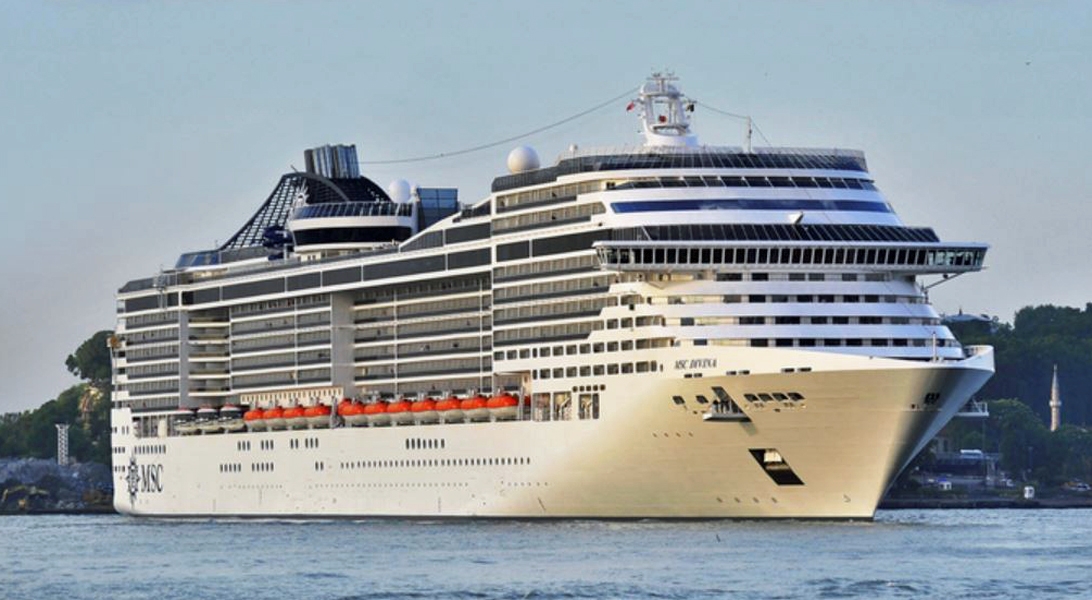













The images shown are for illustration purposes only and may not be an exact representation of what you find on the ship.
The images shown are for illustration purposes only and may not be an exact representation of what you find on the ship.
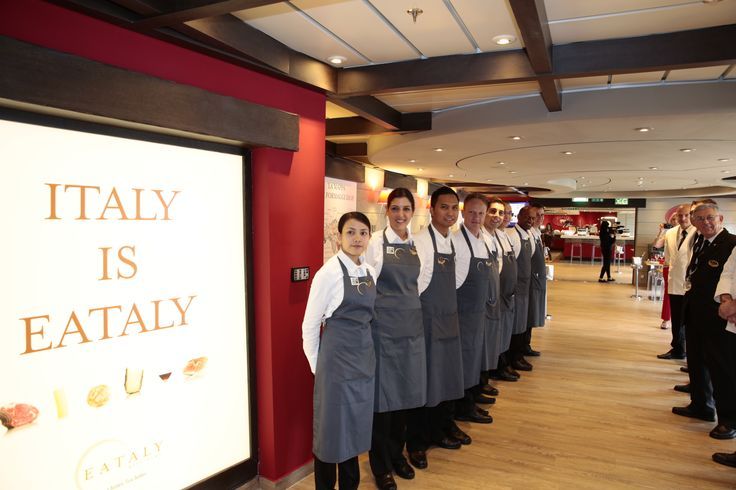
The Eataly Steakhouse serves∘ modern and traditional Italian food. The Eataly on the MSC Divina is fashioned after the famed restaurant in Eataly’s Manhattan location. Those who want to take a piece of Italy home can purchase authentic∘ Italian and artisan products, including olive oils, dried pastas, regional sweets and aged balsamics in the adjacent boutique marketplace.
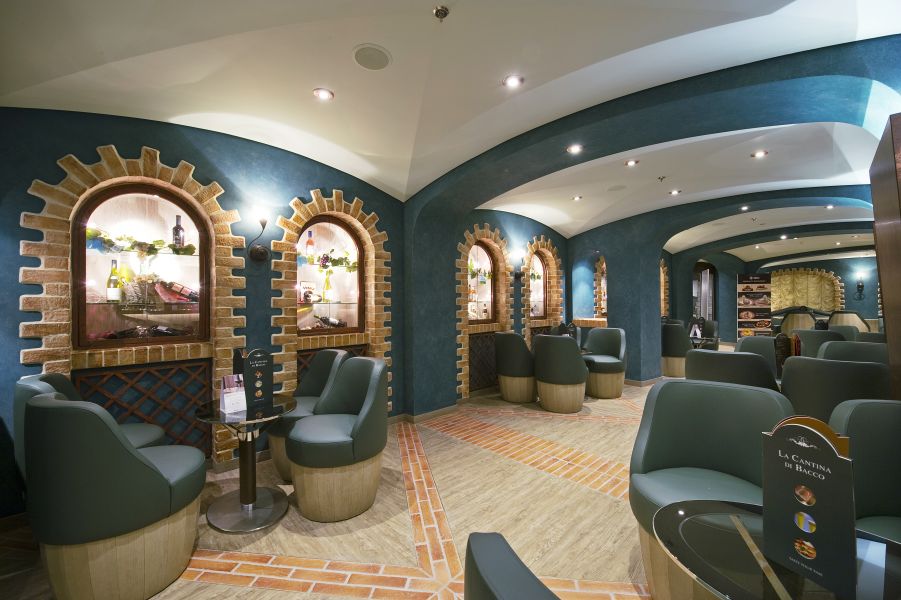
The wine bar and pizzeria, located on deck 7 has a seating capacity of 105 and opens from around 1pm to 2.00am.
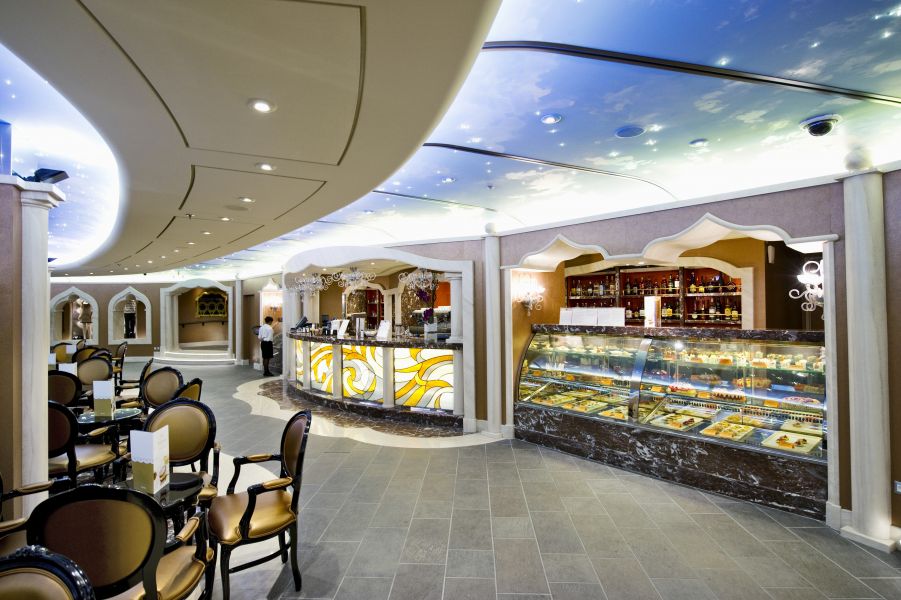
Piazza Del Doge accommodates 80 guests and is located on deck 6. It emulates a Venetian Square feel with live music.
In addition to selling cocktails and wine, it also features a patisserie, coffee and gelato bar.
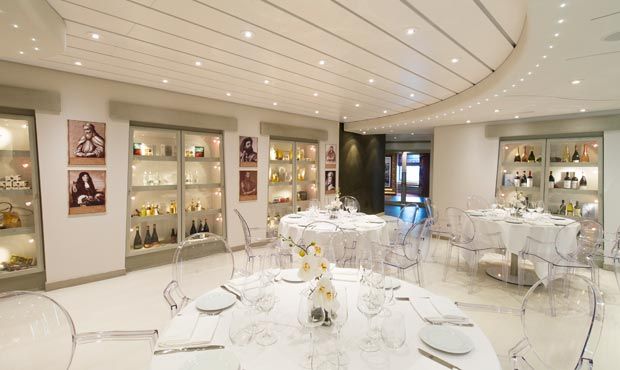
An intimate, 30-seat venue adjacent∘ to Eataly only open for dinner. This specialty restaurant features a different menu each night that was created by the Eataly chefs.
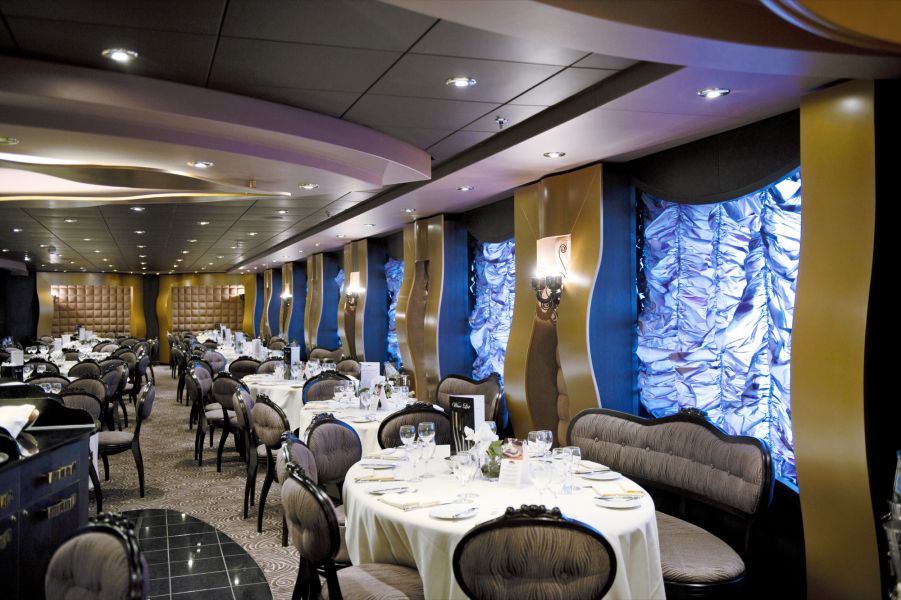
The Black Crab restaurant is the ship's main dining room split over two levels on decks 5 and 6 with seating for 626 and 529 guests respectively.
With open seating for waiter served breakfast (from 7am to 10am) and lunch (12 to 2.00pm), dinner is served over two seatings with 1st seating around 7.15pm and 2nd at 9.45pm and features assigned seating. This means that guests are allocated a set dining time at a specific table in one of the two MDR's for the duration of the cruise.
Serving a range of Italian and international cuisine, the evening menu offers a seven course continental style menu.
An example of the dishes served is as follows:-
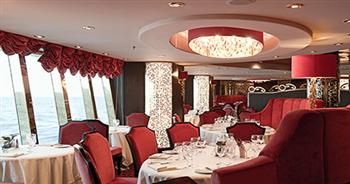
Villa Rossa is Divina's other Main Dining Room∘ offering panoramic views and located on deck 6 with seating for 766 passengers.
With open seating for waiter served breakfast (from 7am to 10am) and lunch (12 to 2.00pm), dinner is served over two seatings with 1st seating around 7.15pm and 2nd at 9.45pm and features assigned seating. This means that guests are allocated a set dining time at a specific table in one of the two MDR's for the duration of the cruise.
Serving a range of Italian and international cuisine, the evening menu offers a seven course continental style menu.
The images shown are for illustration purposes only and may not be an exact representation of what you find on the ship.
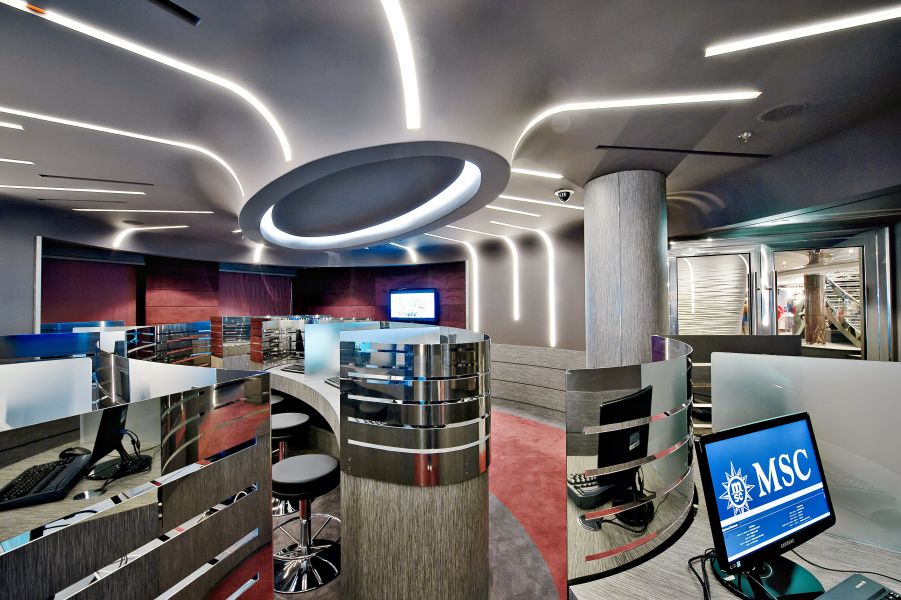
Guests can access the internet and their emails either using their own portable wireless devices or via the ship's Cybercafe on deck 5 opposite the Bar, where guests can use the 15 stations to access the internet.
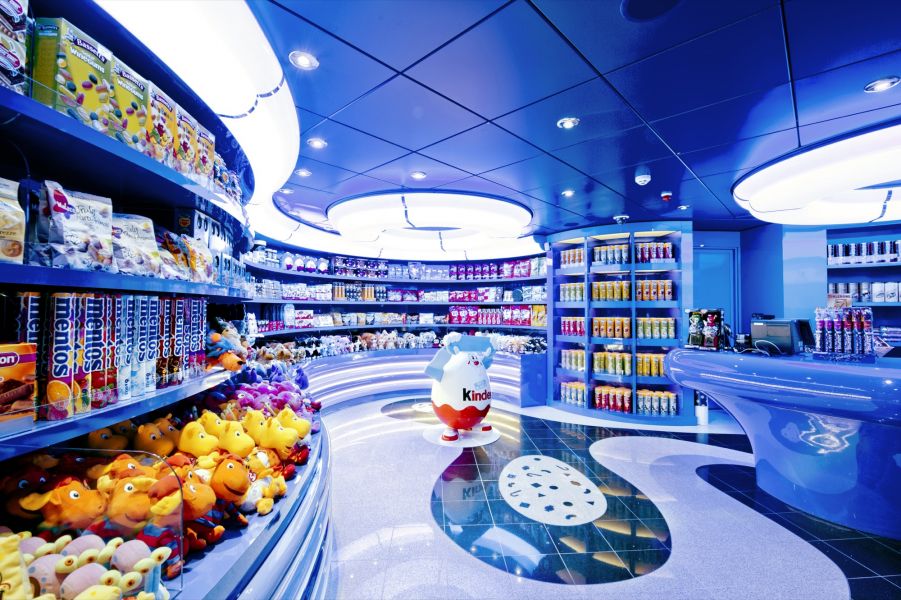
La Caramella, on deck 6, is the ship's candy and confectionary shop.
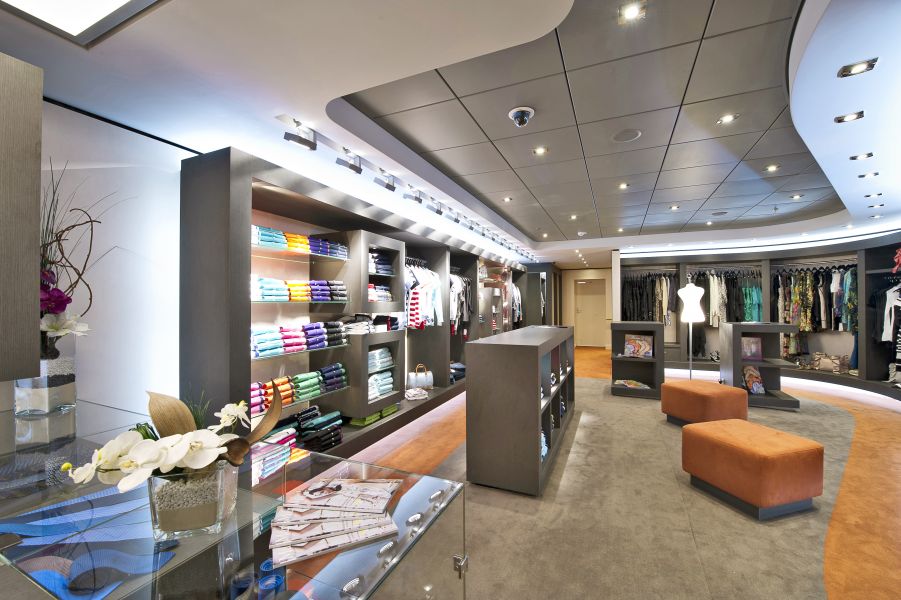
The ship boasts a variety of shops and boutiques.
From the MSC Logo shop that sells MSC clothes, souvenirs and toys, La Profumeria selling a range of cosmetics and perfumes including Dior and Marc Jacobs.
La Boutique, on deck 6 sells men's, women's and children's fashion with brands including Polo, Ralph Lauren, Lacoste and Armani, and the L'Angolo Dell'Oggetto sells sunglasses, watches and fashion jewellery on deck 6 also.
The Duty Free Shop sells a range of tobaccos, liquors and snacks and is located on deck 6.
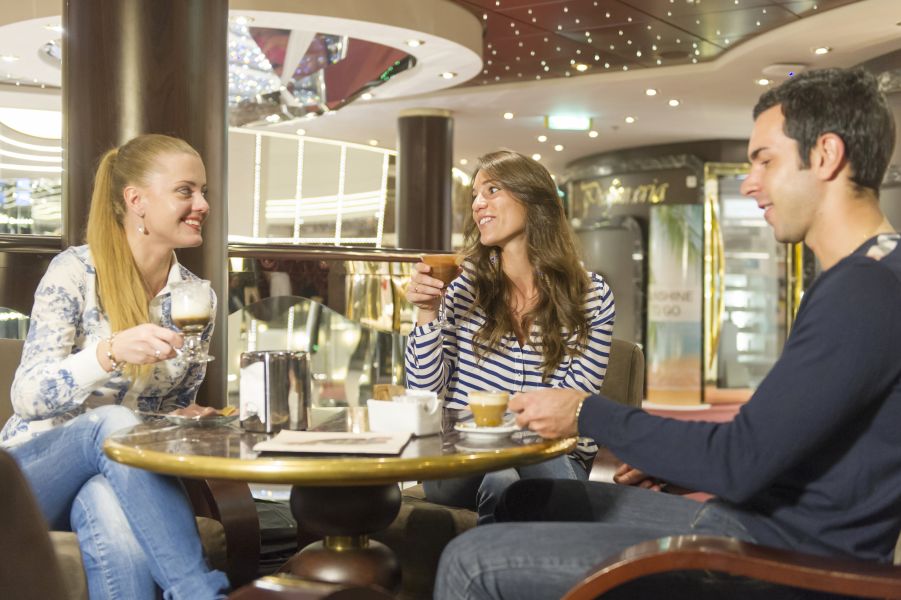
The ship's coffee shop serves a selection of cakes and desserts.
It is located on deck 7 with room for 58 passengers.
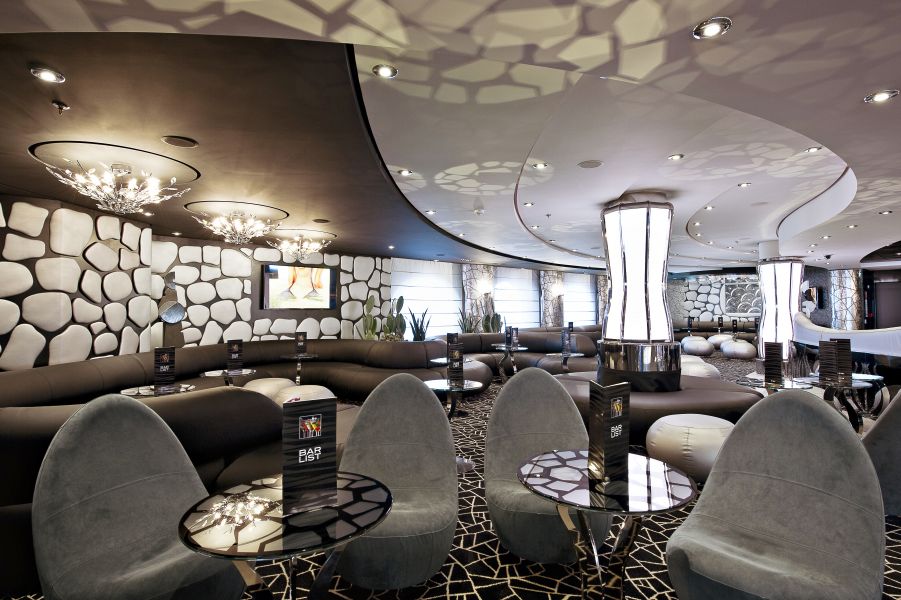
Black & White is a large lounge with a central dance floor, bar and entertainment seating up to 295 guests.

The Pool bar is located by the Pool on deck 14.

The Cigar Lounge is located on deck 6 and is the ship's smoking room with a bar for guests to purchase a range of fine spirits from to enjoy with their cigars, seating 31 passengers.
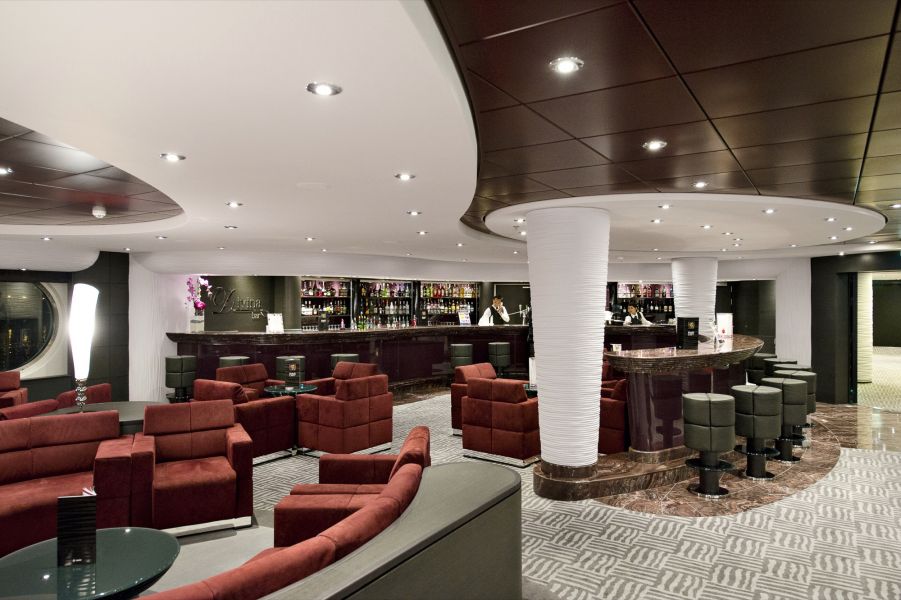
The Bar is on deck 5 by the central atrium with 28 seats.
Guests can enjoy a drink here whilst listening to classical piano music, string quartets and singers.

The Main Lounge overlooks the central atrium and is located on deck 6 serving the foyer area. It can seat up to 98 guests who can enjoy the musical entertainment from the bottom of the atrium.
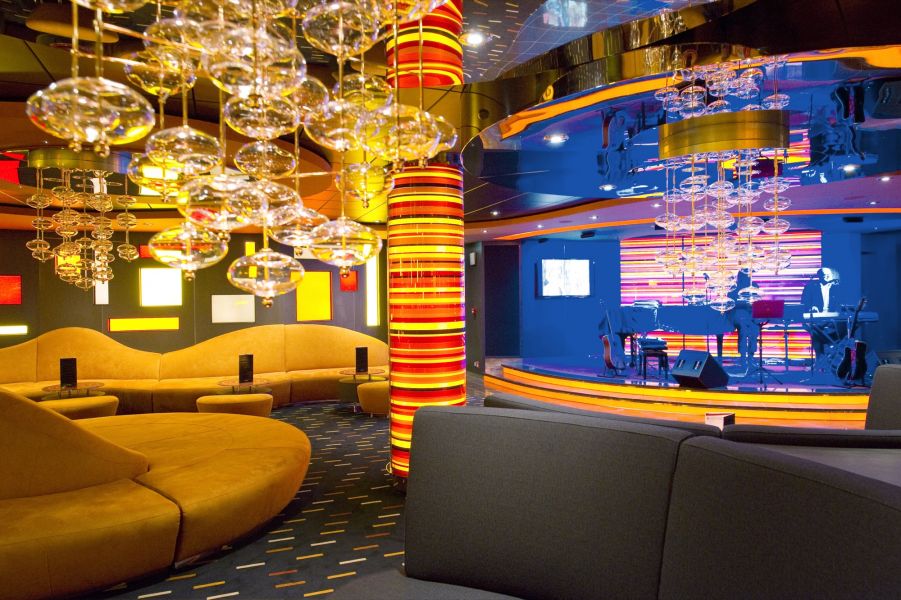
The Golden Jazz Bar has seating for 106 visitors and features live jazz music along with a special range of 'made to measure' drinks.
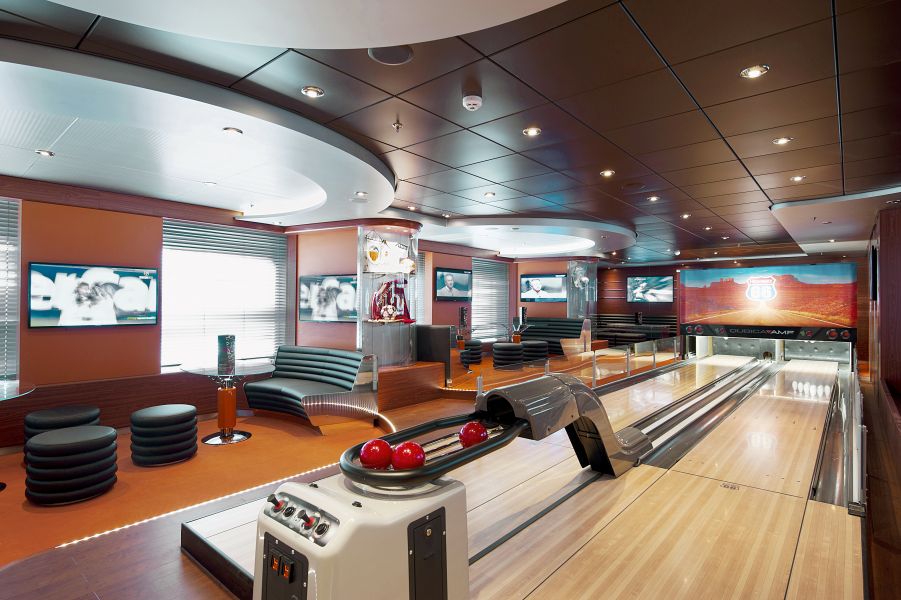
The name says it all; onboard passengers are unlikely to find a better place to relax and catch a game. There's a wide variety of sport shown here, from football to cricket, basketball to ice hockey, something to suit all tastes. Passengers will find a variety of alcoholic and soft drink awaiting, all of which are complimented by a sports-inspired menu, serving up dishes from all around the world.
The Sports Lounge on deck 7 is a multi-screen themed sports bar with seating for 87 passengers.
Featuring a customised drinks menu and snacks, it is also home to the two lane bowling alley which attracts a charge of €6 per game.

The 1,600 seat Theatre Lounge found onboard offers at least 6 different shows, and spans two decks. The seats are tiered, allowing guests to enjoy some of the most varied shows found at sea with the best view possible.
Main production shows are shown at 8.00pm for guests on 1st dinner seating and 10.15pm for those on 2nd dinner seating.
Two decks high and located on decks 6 and 7, it features Broadway style shows, illusionists, dancing on ice shows and circus extravaganzas.
During the day it also hosts bingo games and conferences
The images shown are for illustration purposes only and may not be an exact representation of what you find on the ship.
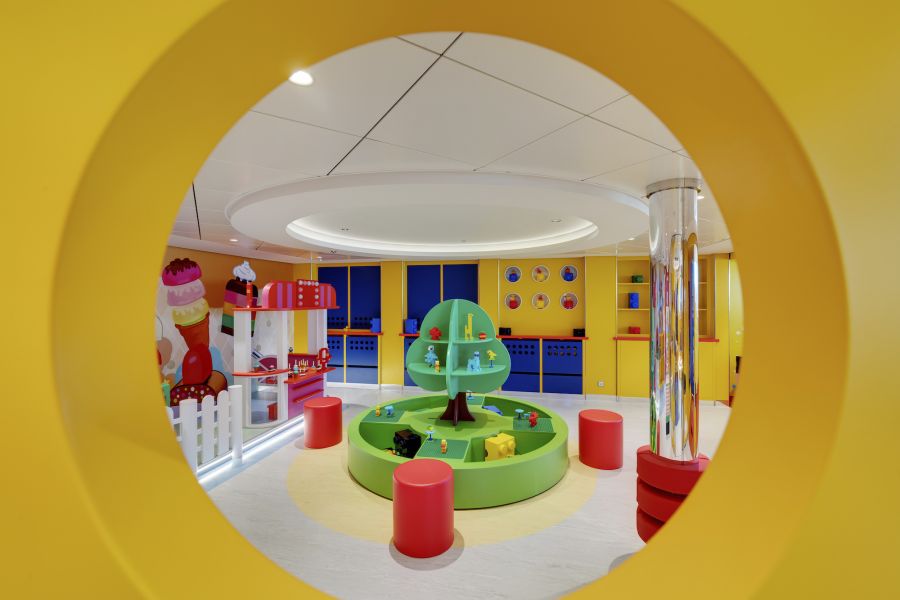
Kids all over the world know and love LEGO® bricks. But did you know that the name LEGO is an abbreviation of the two Danish words: “leg godt”, meaning “play well”?
That’s why we have chosen The LEGO Group∘ as an exclusive entertainment partner: we want to give all the children who cruise with us the chance to play with the best toys in the most fun environment.
The images shown are for illustration purposes only and may not be an exact representation of what you find on the ship.
| 7 nights aboard the MSC Divina | |||
| Drinks packages available. | |||
| Evening entertainment & Broadway style shows | |||
| Speciality Restaurants (charges may apply) | |||
| Upgrade to the Yacht Club Experience | |||
| Award winning MSC Aurea Spa (charges apply) | |||
| Gratuities Included | |||
| Port Taxes and Fees | |||
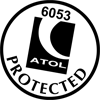 | ABTA and ATOL Protection* | ||
Date 31st Aug 2024 |
Nts 7 |
Please Call for Availability |
Date 31st Aug 2024 |
Nts 7 |
Please Call for Availability |
| Interior | Oceanview | Balcony | Suite | |
| (All prices are £GBP per person) | ||||
| Sat 11th May 202411 May 24 | Please call for availability | |||
| Sat 18th May 202418 May 24 | Please call for availability | |||
| Sat 25th May 202425 May 24 | Please call for availability | |||
| Sat 1st Jun 202401 Jun 24 | Please call for availability | |||
| Sat 8th Jun 202408 Jun 24 | Please call for availability | |||
| Sat 15th Jun 202415 Jun 24 | Please call for availability | |||
| Sat 22nd Jun 202422 Jun 24 | Please call for availability | |||
| Sat 29th Jun 202429 Jun 24 | Please call for availability | |||
| Sat 6th Jul 202406 Jul 24 | Please call for availability | |||
| Sat 13th Jul 202413 Jul 24 | Please call for availability | |||
| Sat 20th Jul 202420 Jul 24 | Please call for availability | |||
| Sat 27th Jul 202427 Jul 24 | Please call for availability | |||
| Sat 3rd Aug 202403 Aug 24 | Please call for availability | |||
| Sat 10th Aug 202410 Aug 24 | Please call for availability | |||
| Sat 17th Aug 202417 Aug 24 | Please call for availability | |||
| Sat 24th Aug 202424 Aug 24 | Please call for availability | |||
| Sat 7th Sep 202407 Sep 24 | Please call for availability | |||
| Sat 14th Sep 202414 Sep 24 | Please call for availability | |||
| Sat 21st Sep 202421 Sep 24 | Please call for availability | |||
| Sat 28th Sep 202428 Sep 24 | Please call for availability | |||
| Sat 5th Oct 202405 Oct 24 | Please call for availability | |||
| Sat 12th Oct 202412 Oct 24 | Please call for availability | |||
| Sat 19th Oct 202419 Oct 24 | Please call for availability | |||
Fusion Cruises when selling travel arrangements is a trading name of The Midcounties Co-operative Ltd. Fusion Cruises is an Accredited Body Member of Midcounties Co-operative Travel Consortium. (ABTA:P6652, ATOL:6053).
Book with Confidence. We are a Member of ABTA which means you have the benefit of ABTA’s assistance and Code of Conduct.
Some of the flights and flight-inclusive holidays on this website are financially protected by the ATOL scheme but ATOL protection does not apply to all holiday and travel services offered on this website. This website will provide you with information on the protection that applies in the case of each holiday and travel service offered before you make your booking. If you do not receive an ATOL Certificate then the booking will not be ATOL protected. If you do receive an ATOL Certificate but all parts of your trip are not listed on it, those parts will not be ATOL protected. Please see our booking conditions for information, or for more information about financial protection and the ATOL Certificate go to: www.caa.co.uk
